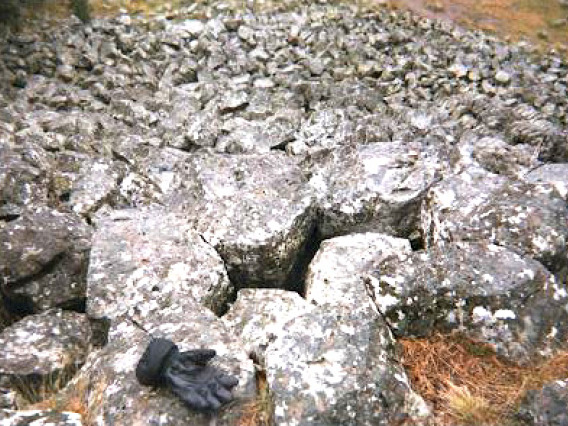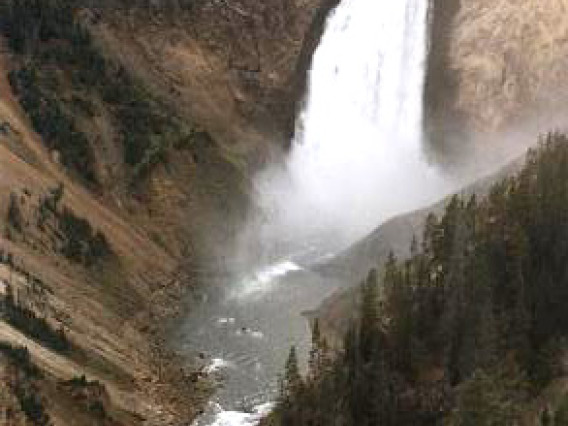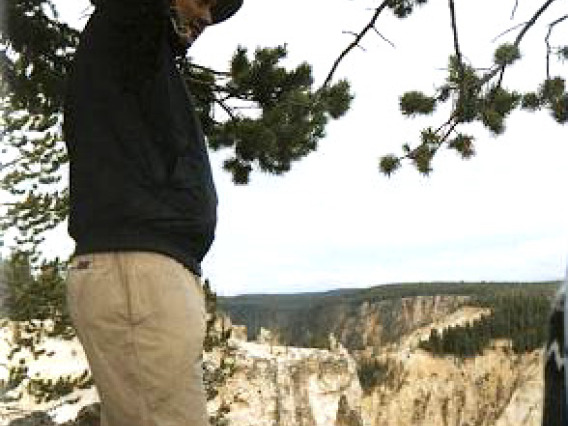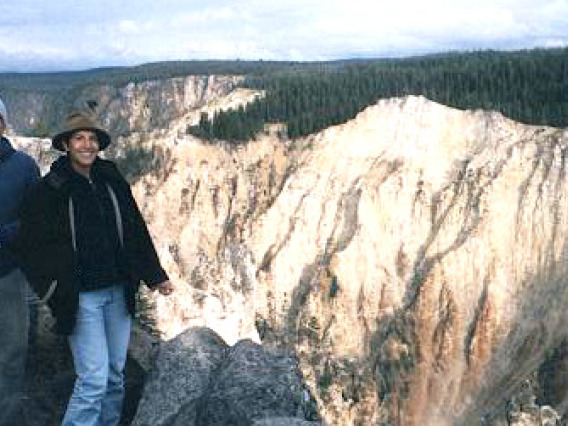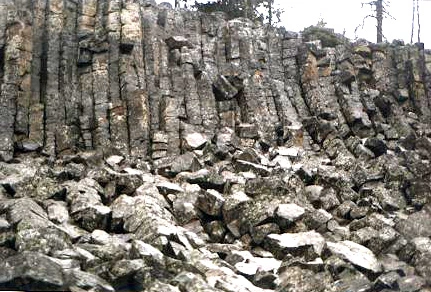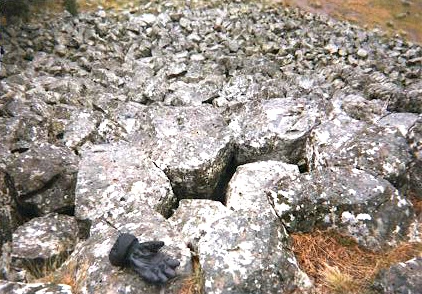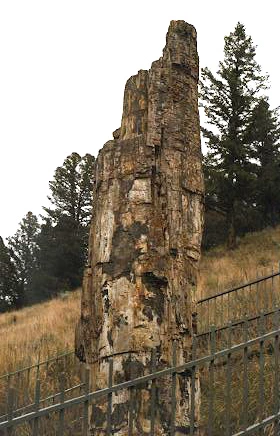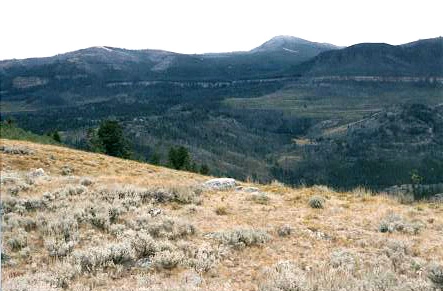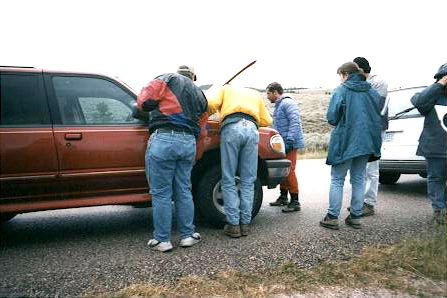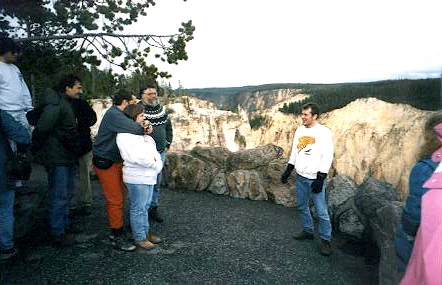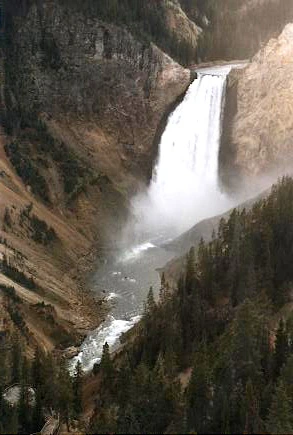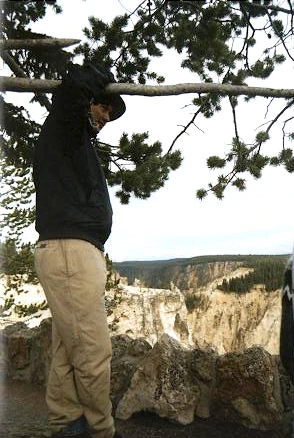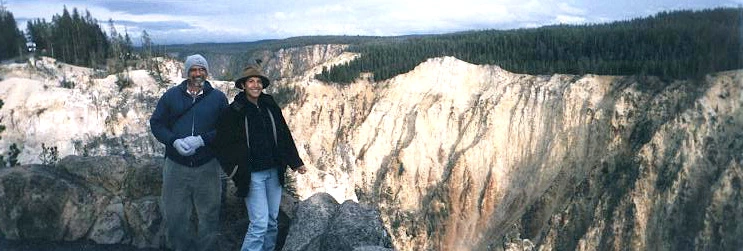Northeastern YNP and the Grand Canyon of the Yellowstone

Even though Thursday morning dawned grey and drizzly, we got up bright and early for a short hike to see columnar jointing and an outcrop that was evidence of the bimodal magmatism in the park area. Columnar jointing caused by cooling cracks in a basaltic flow.
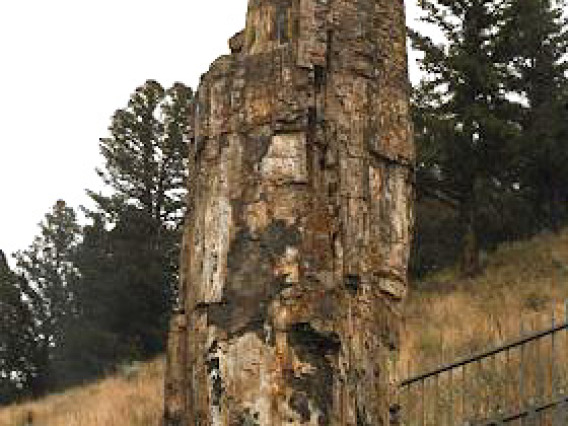
During the Yellowstone area volcanism, trees were buried in deep layers of pyroclastic ashflow. The trees were preserved upright in the rock in their original orientations. Here, a tree that has remained as the surrounding tuff weathered away.

Just west of the park boundary is an extremely shallow and extremely long-running fault, or decollement. The Heart Mountain Detachment Fault is visible in this picture as it cut through a weak limestone layer (the white line in the rocks.
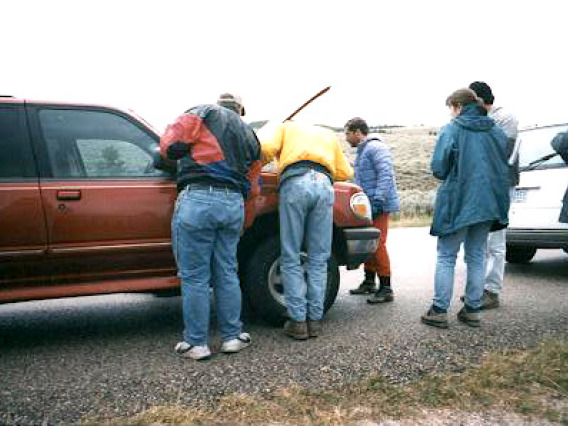
Of course, no field trip would be complete without some van trouble. Fortunately, there was only a funny smell that turned out to be nothing.
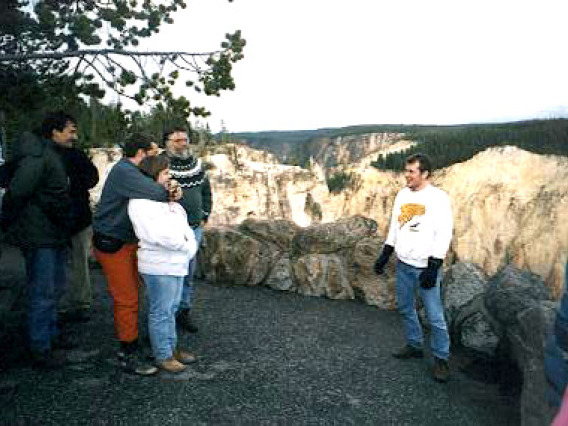
After driving around all day, our last stop made up for it all--the Grand Canyon of the Yellowstone. This is an area where the Yellowstone River has cut a deep canyon for itself. The yellow- tinted rhyolites that gave the river its name line the canyon walls. Eric discusses river downcutting.


